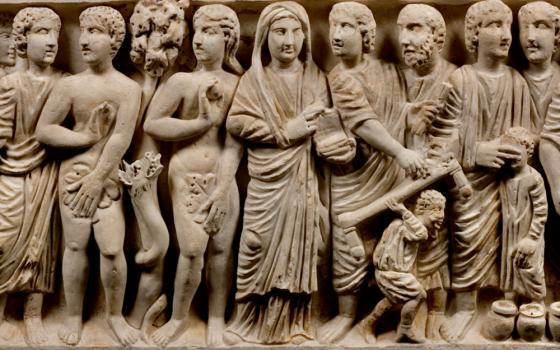I just returned from a terrific 10-day pilgrimage to Rome and Naples, viewing funerary frescos and sarcophagus friezes of faith-filled fourth-century Christian women.
Some pretty amazing, 21st century women and men joined me in cherishing these oft-hidden women whose tomb motifs depict them in authoritative ecclesial postures, teaching and preaching the good news of Jesus Christ.
Since most of history (not only Christian history) was written by men, about the concerns of men, the history of early Christian women is barely discernible.
Important exceptions are first century Christian texts, where we discover that women exercised significant leadership roles in the earliest churches.
Yet after the first century, Christian writings grow silent, mentioning women mainly in a context of prescribing (or more often proscribing) what they may or may not do. The public witness of Christian women was unsettling (not to say challenging) to mainstream Greco-Roman culture.
In succeeding centuries, official church documents justified curtailing female authority by repeatedly citing 1 Timothy's admonishment forbidding women to teach or have authority over men and requiring them to be silent in the assembly (1 Timothy 2:12).
It is nothing short of amazing then, to view Christian funerary art from the late third until the early fifth centuries depicting women teaching and preaching the good news despite being told they should do neither.

